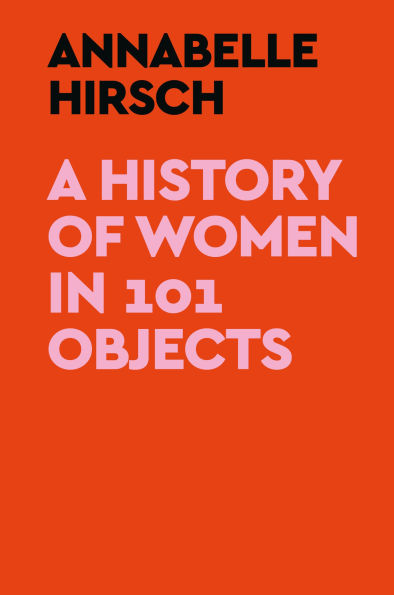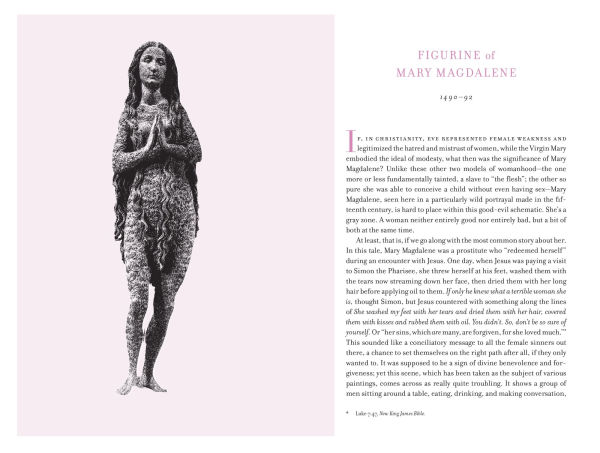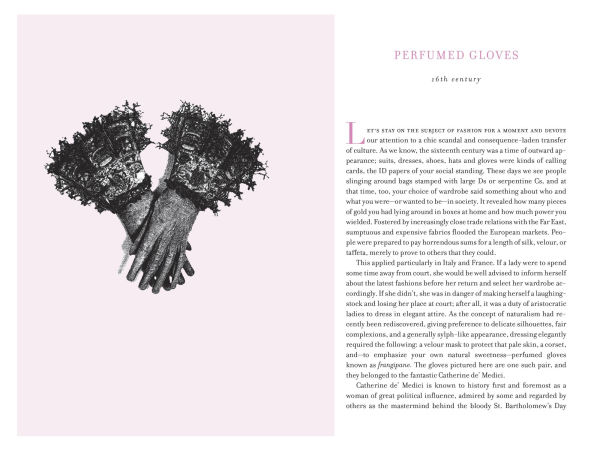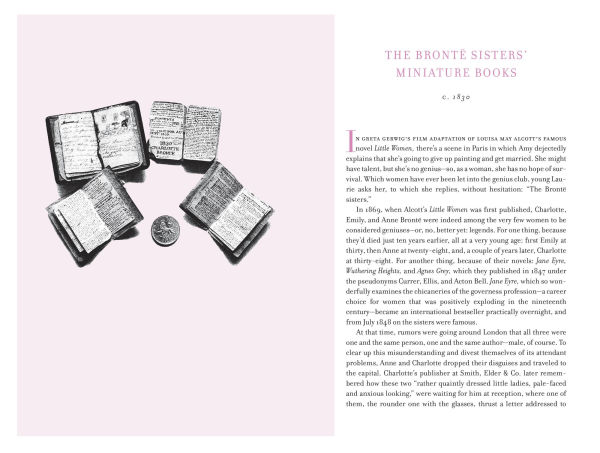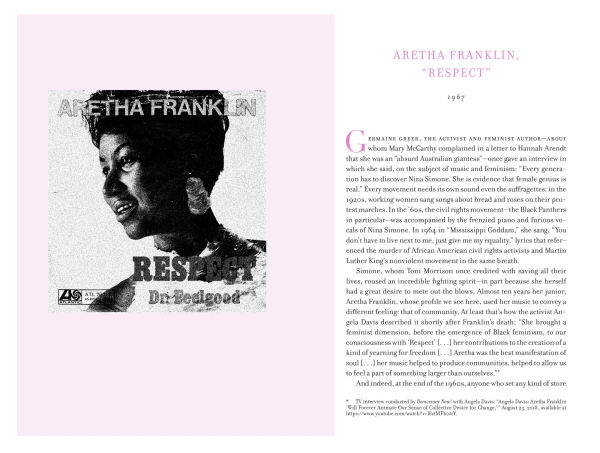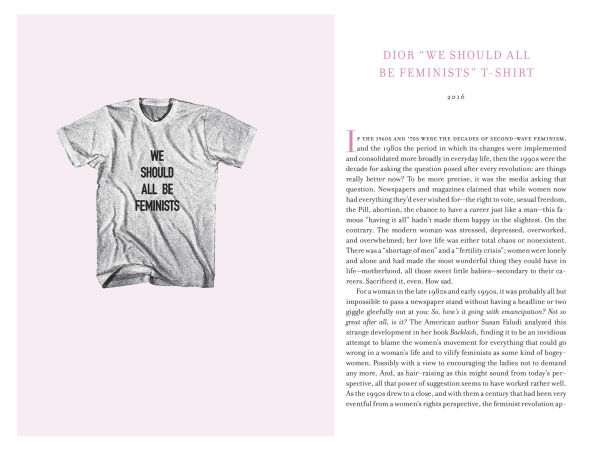Mother’s Day is right around the corner and whether you’re shopping for your partner, grandmother, or a mother figure in your life, it’s high time you give them a great book. We know there’s all kinds of moms, with all different kinds of hobbies and interests, from the musical to the outdoorsy to the mindful […]
A History of Women in 101 Objects
Discover the hidden history of women—and the world—through this visual exploration of intimate objects and the surprising, sometimes shocking stories behind them.
“I adored this book!”—Olivia Colman
This is a neglected history. Not a sweeping, definitive, exhaustive history of the world but something quieter, more intimate and particular: a single journey, picked out in 101 objects, through the fascinating, manifold, and too often overlooked histories of women.
With engaging prose, compelling stories, and a beautiful full-page image of each object, Annabelle Hirsch’s book contains a curated and diverse compendium of women and their things, uncovering the thoughts and feelings at the heart of women’s daily lives. The result is an intimate and stirring alternative history of humans in the world. The objects date from prehistory to today and are assembled chronologically to show the evolution of how women were perceived by others, how they perceived themselves, how they fought for freedom. Some (like a sixteenth-century glass dildo) are objects of female pleasure, some (a thumbscrew) of female subjugation. These are artifacts of women celebrated by history and of women unfairly forgotten by it. With variety and nuance, A History of Women in 101 Objects cracks open the fissures of what we think we know in order to illuminate a much richer retelling: What do handprints on early cave paintings tell us about the role of women in hunting? How is a cell phone related to femicides? What does Kim Kardashian’s diamond ring have to do with Elena Ferrante?
Wide-ranging, subversive, witty, and superbly researched, this is a book that upends all our assumptions about, and presentations of, the past, proving that it has always been as complicated and fascinating as the women who peopled it.
1143731793
“I adored this book!”—Olivia Colman
This is a neglected history. Not a sweeping, definitive, exhaustive history of the world but something quieter, more intimate and particular: a single journey, picked out in 101 objects, through the fascinating, manifold, and too often overlooked histories of women.
With engaging prose, compelling stories, and a beautiful full-page image of each object, Annabelle Hirsch’s book contains a curated and diverse compendium of women and their things, uncovering the thoughts and feelings at the heart of women’s daily lives. The result is an intimate and stirring alternative history of humans in the world. The objects date from prehistory to today and are assembled chronologically to show the evolution of how women were perceived by others, how they perceived themselves, how they fought for freedom. Some (like a sixteenth-century glass dildo) are objects of female pleasure, some (a thumbscrew) of female subjugation. These are artifacts of women celebrated by history and of women unfairly forgotten by it. With variety and nuance, A History of Women in 101 Objects cracks open the fissures of what we think we know in order to illuminate a much richer retelling: What do handprints on early cave paintings tell us about the role of women in hunting? How is a cell phone related to femicides? What does Kim Kardashian’s diamond ring have to do with Elena Ferrante?
Wide-ranging, subversive, witty, and superbly researched, this is a book that upends all our assumptions about, and presentations of, the past, proving that it has always been as complicated and fascinating as the women who peopled it.
A History of Women in 101 Objects
Discover the hidden history of women—and the world—through this visual exploration of intimate objects and the surprising, sometimes shocking stories behind them.
“I adored this book!”—Olivia Colman
This is a neglected history. Not a sweeping, definitive, exhaustive history of the world but something quieter, more intimate and particular: a single journey, picked out in 101 objects, through the fascinating, manifold, and too often overlooked histories of women.
With engaging prose, compelling stories, and a beautiful full-page image of each object, Annabelle Hirsch’s book contains a curated and diverse compendium of women and their things, uncovering the thoughts and feelings at the heart of women’s daily lives. The result is an intimate and stirring alternative history of humans in the world. The objects date from prehistory to today and are assembled chronologically to show the evolution of how women were perceived by others, how they perceived themselves, how they fought for freedom. Some (like a sixteenth-century glass dildo) are objects of female pleasure, some (a thumbscrew) of female subjugation. These are artifacts of women celebrated by history and of women unfairly forgotten by it. With variety and nuance, A History of Women in 101 Objects cracks open the fissures of what we think we know in order to illuminate a much richer retelling: What do handprints on early cave paintings tell us about the role of women in hunting? How is a cell phone related to femicides? What does Kim Kardashian’s diamond ring have to do with Elena Ferrante?
Wide-ranging, subversive, witty, and superbly researched, this is a book that upends all our assumptions about, and presentations of, the past, proving that it has always been as complicated and fascinating as the women who peopled it.
“I adored this book!”—Olivia Colman
This is a neglected history. Not a sweeping, definitive, exhaustive history of the world but something quieter, more intimate and particular: a single journey, picked out in 101 objects, through the fascinating, manifold, and too often overlooked histories of women.
With engaging prose, compelling stories, and a beautiful full-page image of each object, Annabelle Hirsch’s book contains a curated and diverse compendium of women and their things, uncovering the thoughts and feelings at the heart of women’s daily lives. The result is an intimate and stirring alternative history of humans in the world. The objects date from prehistory to today and are assembled chronologically to show the evolution of how women were perceived by others, how they perceived themselves, how they fought for freedom. Some (like a sixteenth-century glass dildo) are objects of female pleasure, some (a thumbscrew) of female subjugation. These are artifacts of women celebrated by history and of women unfairly forgotten by it. With variety and nuance, A History of Women in 101 Objects cracks open the fissures of what we think we know in order to illuminate a much richer retelling: What do handprints on early cave paintings tell us about the role of women in hunting? How is a cell phone related to femicides? What does Kim Kardashian’s diamond ring have to do with Elena Ferrante?
Wide-ranging, subversive, witty, and superbly researched, this is a book that upends all our assumptions about, and presentations of, the past, proving that it has always been as complicated and fascinating as the women who peopled it.
32.0
In Stock
5
1

A History of Women in 101 Objects
432
A History of Women in 101 Objects
432
32.0
In Stock

Product Details
| ISBN-13: | 9780593728758 |
|---|---|
| Publisher: | Crown Publishing Group |
| Publication date: | 03/05/2024 |
| Pages: | 432 |
| Sales rank: | 84,946 |
| Product dimensions: | 6.30(w) x 9.30(h) x 1.40(d) |
About the Author
From the B&N Reads Blog






